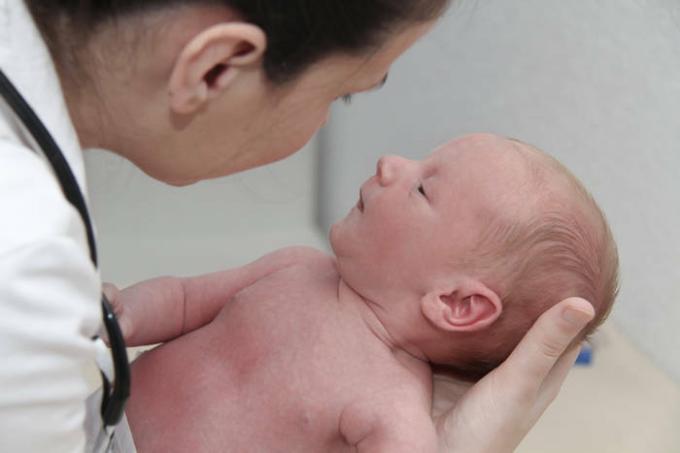Why do children have marbling of the skin? Is this phenomenon dangerous, and what diseases it may indicate. In what cases and to which doctor you need to show the child
A child is born quite differently from what we expect. The purple-cyanotic, and then bright red color of the baby's skin is called "erythema of newborns" and disappears on its own at 3-6 days of life. However, there is a new cause for concern for parents. Red spots, dots and lines appear on the baby's pink skin every now and then. Outwardly, they resemble a pattern on marble, which is why they were called "marbling of the skin". What is this phenomenon, why does it arise and is it worth worrying about this? A neurologist told us about this. Alexander Miroshnikov.
Why does a child have marbling of the skin

Marbled skin is usually due to physiological causes / istockphoto.com
The skin of a newborn baby is similar in everything to the skin of an adult, but there are age-related features in its structure. The cells are not yet fully organized, the layers of the epidermis are thin. Because of this, vessels and capillaries are located very close to the surface. At the same time, the baby's vascular system by itself is not yet able to adequately respond to environmental factors. Vessels expand and contract easily. This is why doctors do not advise you to panic because of
red cheeks in a child - most often this is not a sign of allergy, but a normal physiological reaction of the skin.Marbling of the skin is considered the same normal reaction in most cases. As a rule, it occurs in a child periodically. For example, due to temperature changes during bathing, changing your baby's clothes or changing a diaper. Or due to the increased stress when the baby is sucking on the breast or bottle. In the first case, marbled skin is most often visible on the arms and legs. In the second - on the side, which at the time of feeding does not come into contact with the mother.
Also, marbling of the skin occurs in premature babies. This is due to the fact that their body is even less adapted to the effects of the environment. However, in both cases, such a phenomenon usually goes away on its own. By about the sixth month, the baby's nervous and vascular system begins to work harmoniously, the vessels expand and contract correctly, and the skin ceases to "give out" the marble pattern in response to external impact.
Is it necessary to treat marbled skin in a child

Massage and air baths can help improve vascular regulation / istockphoto.com
If this phenomenon is periodic, and apart from it, the child is not worried about anything else, the mother needs to gain peace of mind and wait until the skin "matures" to normal work. It is possible to accelerate somewhat the maturation of the vegetative regulation of blood vessels. For this, regime activities are best suited:
- proper nutrition of the baby (preferably breastfeeding)
- regular walks in the fresh air (at least twice a day and in any weather)
- air baths
- water procedures (bathing, swimming)
- daily routine (correct alternation of sleep and wakefulness)
- parental massage, gymnastics for arms and legs
What diseases can be indicated by marbling of the skin

Show your child to a doctor to rule out dangerous illnesses / istockphoto.com
If the marbling of the skin in a child is observed constantly, or quite often, and even in ordinary conditions (without stress or temperature changes), one can suspect that the baby has certain diseases. Most often this is a sign of problems with the cardiovascular system, anemia or the body's reaction to a bacterial or viral infection is possible. In very rare cases, there is congenital telangiectatic marbled skin. With this disease, the characteristic pattern on the baby's skin does not disappear at all; defects in the development of the skeletal and muscular system, damage to the eyes and other malformations are also observed.
Also, marbling of the skin can indicate such diseases:
- neonatal sepsis
- congenital hypothyroidism (thyroid dysfunction)
- lupus
- trisomy (Down syndrome, Patau, Edwards
- Menkes syndrome
- Riley-Day syndrome (familial dysautonomy)
- hypoxic encephalopathy in newborns
These are quite rare diseases that, in addition to marbled skin, are accompanied by other, much more serious symptoms. However, in order to exclude them completely, it is better to show the child to a neurologist.
You will also be interested to read:
Fatigue in a baby: 6 signs of tiredness in a baby
Scheduled examinations of the baby: which doctors show a child under one year old


